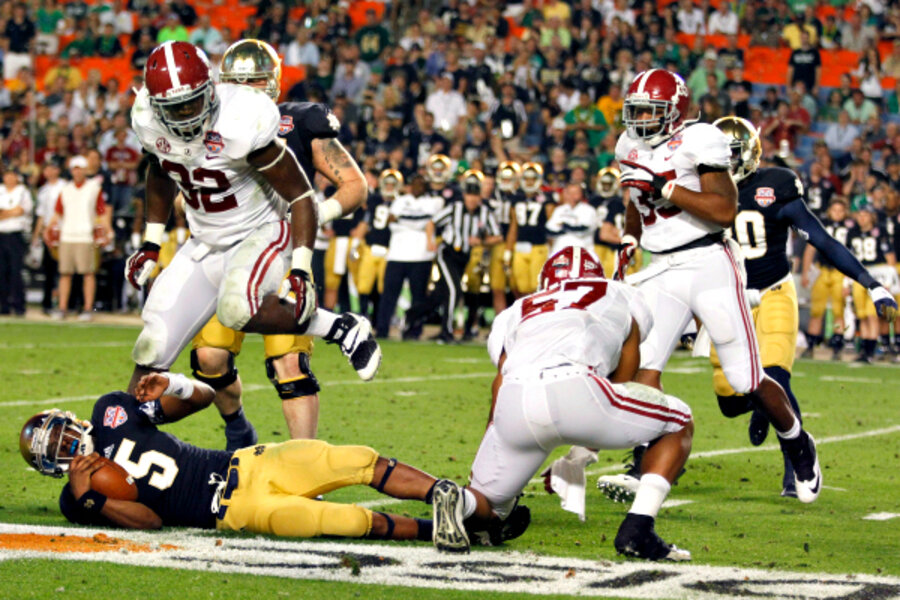College football: Let the big guys go
Loading...
Big-time college football: Fans love it, whether they’re in the stands feeling the excitement firsthand or sitting on the sofa wearing their team’s colors in front of the TV.
The athletes love it, too. Those who feel they may have a chance to go on to professional football are especially eager to showcase their talents in front of large crowds and national TV audiences.
Are the top college teams like a minor league, feeding players into the professional National Football League? That’s true in part. But the college game is both more and less than vocational training in football. College football is more than an NFL feeder for players because of what it does for the schools themselves, acting as a publicity machine and a valuable recruiting tool for students who want to cheer for a team. And college football is less than preparation for the pros because the vast majority of the college players won’t go on to the NFL (or other pro leagues) and are playing for other reasons, not the least of which is because they love the game.
Yet few deny that the big-time college game is broken, for many reasons. The athletes are caught in a no man’s land between being true amateurs and paid professionals. They can’t profit from their own notoriety (by signing autographs or licensing their names for money, as professional athletes do, for example). They are on scholarships that legally can pay most, but not all, of their college expenses.
But the top college programs would like to lavish more perks on their players, such as the idea floated in 2011 to allow a $2,000 stipend per player beyond paying tuition, room, and board. Such a rule, which would move ever closer to making college athletes paid professionals, is opposed by schools whose programs would be hard put to find the extra money to spend.
Last week the Knight Commission report, a review of the way the National Collegiate Athletic Association operates, was delivered to NCAA president Mark Emmert. It made several recommendations on how to improve the governance of college football. They include adding fresh faces to the NCAA executive committee and Division I board of directors and steps to make sure that revenues from the new College Football Playoffs are returned to NCAA schools “to directly support athletes’ educational experiences.”
But the most radical change received only a recommendation for further study. It proposes creating a “Big 5” super division made up of teams from the top five conferences (the SEC, the Pac-12, the Big Ten, the Big 12, and the ACC – think Alabama, Oregon, Ohio State, Florida, Texas, etc.).
The Big 5 could be freed to set more liberal rules on reimbursement to players and lavish even more money on their programs. Players who aspire to a pro career, and had the talent to match, would find these schools more attractive than ever.
Meanwhile the other Division I schools, who would still offer scholarships, would be freed of the immense cost of competing with the juggernauts. Athletes playing at these colleges could still leverage their football skills to pay for the largest part of their college education.
But the schools who are left out of the Big 5 may balk. Their alumni may be reluctant to see their school’s football program not playing at the highest Big 5 level – even though, in practical terms, these schools have athletic budgets that are only a fraction as large and will never be able to compete with Big 5 teams.
That potential roadblock has stirred talk that the Big 5 schools might walk away from the NCAA altogether, though no one seems too eager for that to happen.
Separating out the “big boys” from the rest of major college football would be a useful experiment. It would create a more honest and transparent college game, acknowledging that colleges play football for vastly different reasons and with vastly different budgets.
The Big 5 could concentrate on being a training ground for pros that entertains its fans by showcasing the most talented young players in the country. And the rest of college football could retain at least some remnant of the ideal that college football is an amateur endeavor.







